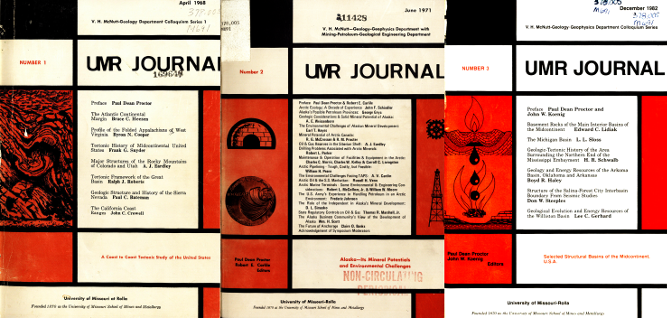UMR Journal -- V. H. McNutt Colloquium Series

Publication Date
01 Dec 1982
Abstract
The Arkoma basin is a structurally defined basin that underlies an area of about 13,000 sq. mi. It extends from Little Rock, Arkansas, to Atoka, Oklahoma. The rocks in the basin grade upward from dolomite, some limestone, sandstone (Upper Cambrian to Upper Devonian) to shale and limestone (Upper Devonian to Lower Pennsylvanian) to shale, limestone, and sandstone (Lower Pennsylvanian) to shale and sandstone (Middle Pennsylvanian). The sediments that formed rocks in the lower part of the Atoka formation on the south side of the basin were deposited in a deep-water environment. All other sediments in the basin were deposited in shallow-water, littoral, or deltaic environments. Growth faults were restricted to the south side of the basin during Late Mississippian and Morrowan time but became common throughout the basin during Atokan time. During the Ouachita orogeny, the rocks were folded into east-west trending synclines and anticlines, and the anticlines along the southern part of the basin were ruptured by thrust faults. A small amount of oil has been produced from reservoirs of Ordovician, Silurian, and Pennsylvanian age in the extreme southwestern part of the basin. Approximately 4.9 trillion cu. ft. of natural gas have been produced from Ordovician to Pennsylvanian reservoirs. About 280 million short tons of coal have been produced from rocks of Atokan and Des Moinesian age.
Document Version
Final Version
File Type
text
Language(s)
English
Rights
© 1982 University of Missouri--Rolla, All rights reserved.
First Page
43
Last Page
54
Recommended Citation
Haley, Boyd R.
(1982)
"Geology and Energy Resources of the Arkoma Basin, Oklahoma and Arkansas,"
UMR Journal -- V. H. McNutt Colloquium Series: Vol. 3, Article 6.
Available at:
https://scholarsmine.mst.edu/umr-journal/vol3/iss1/6


